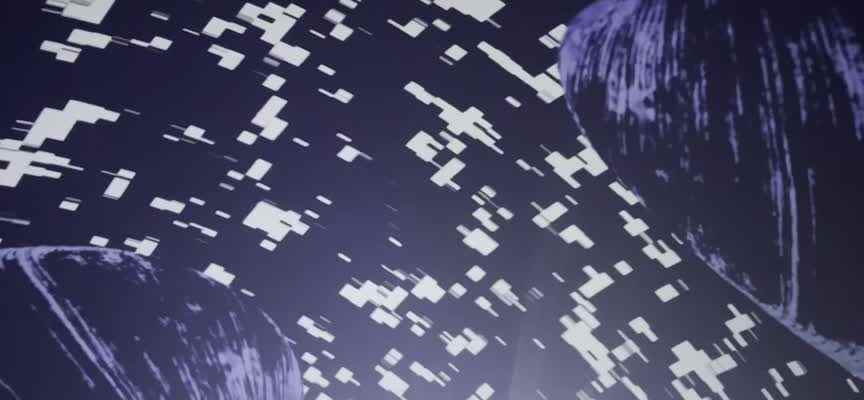The Society for Technological Arts (SAT) is broadcasting, until November 24, the immersive film ECOSYSTEM produced in Montreal by two French artists, electronic musician Maxime Dangles and videographer and designer Dylan Cote, as part of the support program for the creation of works funded by the SAT. The Press attended the screening and met Maxime Dangles, who signs the film’s soundtrack.
Posted yesterday at 1:03 p.m.
Electronic musician Maxime Dangles was at the University of Quebec in Montreal (UQAM) last week. He participated in an art and science project called Auditory which led him, three years ago, to embark on the creation of the film ECOSYSTEM. Auditif brings together French and Quebec scientists around the impacts of the climate crisis and human activity on biological diversity, in particular that of sound on the marine ecosystems of the St. Lawrence.
The film discusses the state of these ecosystems, particularly from the angle of bivalve molluscs. “Scientists from the Auditory project are studying scallop shell larvae that are almost invisible to the naked eye,” says Maxime Dangles. They send out boat sounds and seek to know whether or not this promotes their development, whether it creates deformations. »

PHOTO FRANÇOIS ROY, THE PRESS
Electronic music artist Maxime Dangles
Maxime Dangles spent two years following Auditory scientists in their research, carried out in particular in Rimouski. As he was coming to Montreal this fall and he had never seen, completed, this film which he co-signed with the Parisian artist Dylan Cote, the Society for Technological Arts programmed it again, after having screened in the summer of 2021.
Soundtrack design
During his residency at the SAT in 2019, it was the first time that Maxime Dangles participated in the sound design of a major immersive film. The soundtrack was not designed according to the images as is often done for a fiction film. The biological aspects treated in the film inspired Maxime Dangles, but he also added sounds that are not marine in order to break a kind of uniformity.
-

PHOTO FRANÇOIS ROY, THE PRESS
View of the projectionECOSYSTEMat the SAT
-

PHOTO BRUNO DESTOMBES, PROVIDED BY SAT
View of the projectionECOSYSTEM at the SAT
-

PHOTO FRANÇOIS ROY, THE PRESS
View of the immersive film projection ECOSYSTEM at the SAT
1/3
“During my residency, I let myself be guided by the vibrations of the moment and I made the sound in a week”, says the artist, who records electronic, techno, pop or ambient music, creates mixing DJ from time to time and produces soundtracks for documentaries, commercials or companies.
ECOSYSTEM is not a film whose style really contrasts with what the SAT has already presented in the past. Nothing revolutionary here. We let ourselves be lulled by the images, the deformations, the tremors, the vibrations and the underwater atmosphere. The noises of water and boats, the impressions of abyssal depth give realism to the theme addressed. But Maxime Dangles’ music goes beyond the marine atmosphere and greatly favors the immersive aspect of the work. With thunder, metallic sounds, sometimes stressful, haunting or disturbing sounds. And even, towards the end, scientific comments on the research of the Auditive project.
“The project with the SAT is really one of my projects that I’m most proud of,” he says. Of course because the theme of ecology is very important today. But also because this place, here at the SAT, is the only one in the world so well equipped to do such complicated immersive technique. A place open to the public, where you can do a paid residency and with a dome like the Satosphere, it’s unique. »
Maxime Dangles would have likedECOSYSTEM is widely distributed, but given the technique used, it can only be distributed in planetariums. “In France, planetariums are quite sensitive to projecting works that are not in space,” he says. And then, the technique for the image and for the sound, in a dome like the SAT, is not the same as in other places. But I would still like to take part in another immersive film with the SAT one day…”

